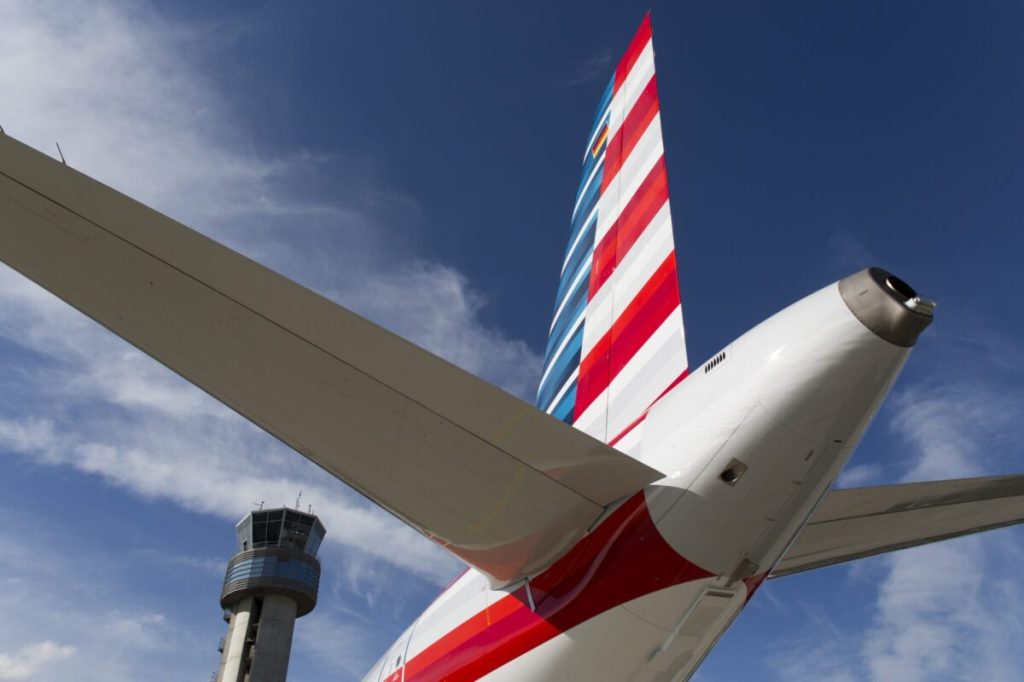
American Airlines will offer free “high-speed” Wi-Fi on flights starting next year. The complimentary service will begin in January 2026 for members of its AAdvantage loyalty program and be offered in partnership with telecoms giant AT&T.
It will be available on aircraft equipped with Intelsat and Viasat satellite Wi-Fi systems. American Airlines says this will account for about 90% of its fleet by 2026. The carrier claims that it will offer free inflight connectivity on more planes than any other U.S. domestic airline.
As well as larger aircraft, American says it is “on pace” to kit out more than 500 regional jets with the new technology before the end of 2025. In total, the airline expects to offer complimentary Wi-Fi on more than 2 million flights a year.
It is unclear what the pricing strategy will be for passengers who are not members of the AAdvantage program. Skift has contacted American Airlines for further details.
American Airlines Plays Catch-Up
Inflight connectivity is currently a relative weak spot for American Airlines, particularly as major rivals invest heavily in free-to-access products.
When flying within the U.S., American offers ad-sponsored Wi-Fi on its domestic narrowbody fleet. However, the company charges many other passengers for internet access, with complaints about the high cost and patchy connectivity.
Unlike some competitors, American does not currently offer free international Wi-Fi as a perk in its premium cabins, or to passengers with top status in its AAdvantage program. The airline encourages travelers to visit this webpage to find out what onboard connectivity is available on a given flight.
Speaking at the Skift Aviation Forum last November, American Airlines CEO, Robert Isom, hinted that Wi-Fi improvements were on the way: “I’m a very frequent traveler, I know that there are spotty outages, but for the most part on American, [Wi-Fi] is not something for the future – we have it, and we have it more broadly than anyone else.
“But we’re going to make sure it’s competitive not only in terms of the service and capability, but also in terms of the offerings that customers want and how they want to consume it,” Isom added.
The High-Speed Wi-Fi Race
New-generation satellite-based systems are sparking a revolution in onboard connectivity, with many airlines investing heavily in the tech.
In the U.S., Hawaiian Airlines and hybrid carrier JSX use Starlink. SpaceX, the company that owns Starlink, also has deals with Qatar Airways, Latvia’s airBaltic, and Tokyo-based Zipair for internet service.
Last September, United Airlines announced plans to install Elon Musk’s Starlink Wi-Fi throughout its fleet, becoming the largest U.S. carrier to use the service.
United expects the first passenger flights with Starlink to operate before the end of the year. The service will also be free — United currently charges $8 for in-flight Wi-Fi to MileagePlus members and $10 to nonmembers.
Delta Air Lines – American’s other major full-service rival – is also busy making improvements to its Wi-Fi offering. It is currently rolling out free onboard internet across its global network, in partnership with T-Mobile.
To manage expectations, Delta is launching free international Wi-Fi on a route-by-route basis. The carrier is mirroring its successful domestic rollout strategy where select city pairs were prioritized.
Watch American Airlines CEO, Robert Isom, at the Skift Aviation Forum 2024:
Airlines Sector Stock Index Performance Year-to-Date
What am I looking at? The performance of airline sector stocks within the ST200. The index includes companies publicly traded across global markets including network carriers, low-cost carriers, and other related companies.
The Skift Travel 200 (ST200) combines the financial performance of nearly 200 travel companies worth more than a trillion dollars into a single number. See more airlines sector financial performance.
Read the full methodology behind the Skift Travel 200.



